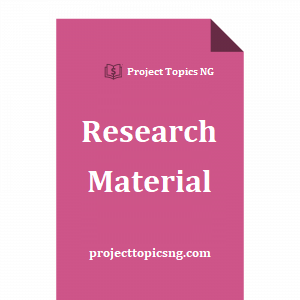Brief Introduction
Agriculture as defined by Oxford Advanced Learners Dictionary 6th edition is the science or practice of farming. It is the art, science business, and industry of cultivating the land to grow crops, rear animals and prepare plants and animal products for man’s use.
Before recorded history, man depended on wild animals for food, clothing, shelter, and transport. Due to the increasing human population, the demand for food and animal protein had outweighed the supply from natural resources which fluctuated, became laborious and expensive. Therefore man had gone a little bit further as society made the transition from hunting to pasteuralism and cultivation, certain animal species were domesticated in areas other than their natural habitat.
These farm animals are exhaustible resources but are renewable. Their renewability however depends on the level of management adopted. It is, for this reason, one has to learn the scientific techniques involved in maintaining and improving these resources to maximum yield and their usefulness to mankind.
Agriculture is one of the core subjects in both junior and senior secondary schools in the Nigerian 6:3:3:4 system of educational programme (ONWUEGBUNAM 1993). Agricultural science teaching covers the following areas;
- Animal science/production
- Crop science
- Soil science
- Agricultural extension and
- Agricultural economics.
Table of Contents
Title Page … … … … … … … … … i
Approval Page… … … … … … … … ii
Certification … … … … … … … … … iii
Dedication … … … … … … … … … iv
Acknowledgement … … … … … … … … v
Abstract … … … … … … … … … vi
Table of Content … … … … … … … vii
List of Tables … … … … … … … … viii
CHAPTER ONE
1.1 Introduction… … … … … … … … 1
1.1 Background of the Study… … … … … 1
1.2 Statement of the problem… … … … … 8
1.3 Purpose of the Study… … … … … … 10
1.4 Significance of the Study… … … … … 11
1.5 Scope of the Study… … … … … … 13
1.6 Limitation of the Study… … … … … … 13
1.7 Research Question… … … … … … … 14
CHAPTER TWO
2.0 Review of the Related Literature… … … … 16
2.1 Animal Science Concept and Component… … 16
2.2 The Need for In-service Training… … … … 21
2.3 The Various Modes of In-service… … … … 25
2.4 The Motivational Factors which Induce In-service Training… … … … … … … … … 28
2.5 Summary of the Literature Review… … … 31
CHAPTER THREE
3.0 Research Methodology… … … … … … 34
3.1 Research Design… … … … … … … 34
3.2 Area of the Study… … … … … … … 35
3.3 Population of the Study… … … … … … 35
3.4 Description of Instrument for Data Collection… 35
3.5 Validation of the Instrument… … … … … 37
3.6 Reliability of the Instrument… … … … … 38
3.7 Administration of the Instrument… … … … 38
3.8 Data Analysis Techniques… … … … …… 38
CHAPTER FOUR
4.1 Data Presentation and Analysis… … … … 41
4.2 Summary of Findings… … … … … … 46
CHAPTER FIVE
5.0 Discussion of the Result… … … … … 49
5.1 Educational Implication of the Study… … … 53
5.2 Recommendation… … … … … … … 54
5.3 Conclusion… … … … … … … … 55
5.4 Suggestion for further research… … … … 55
REFERENCES… … … … … … … … 57
Appendix A (Letter)… … … … … … … 60
Appendix B (Questionnaire)… … … … … … 61
Appendix C (Schools in Udi L.G.A of Enugu State and their Agricultural Science Teachers)… … … ……65


